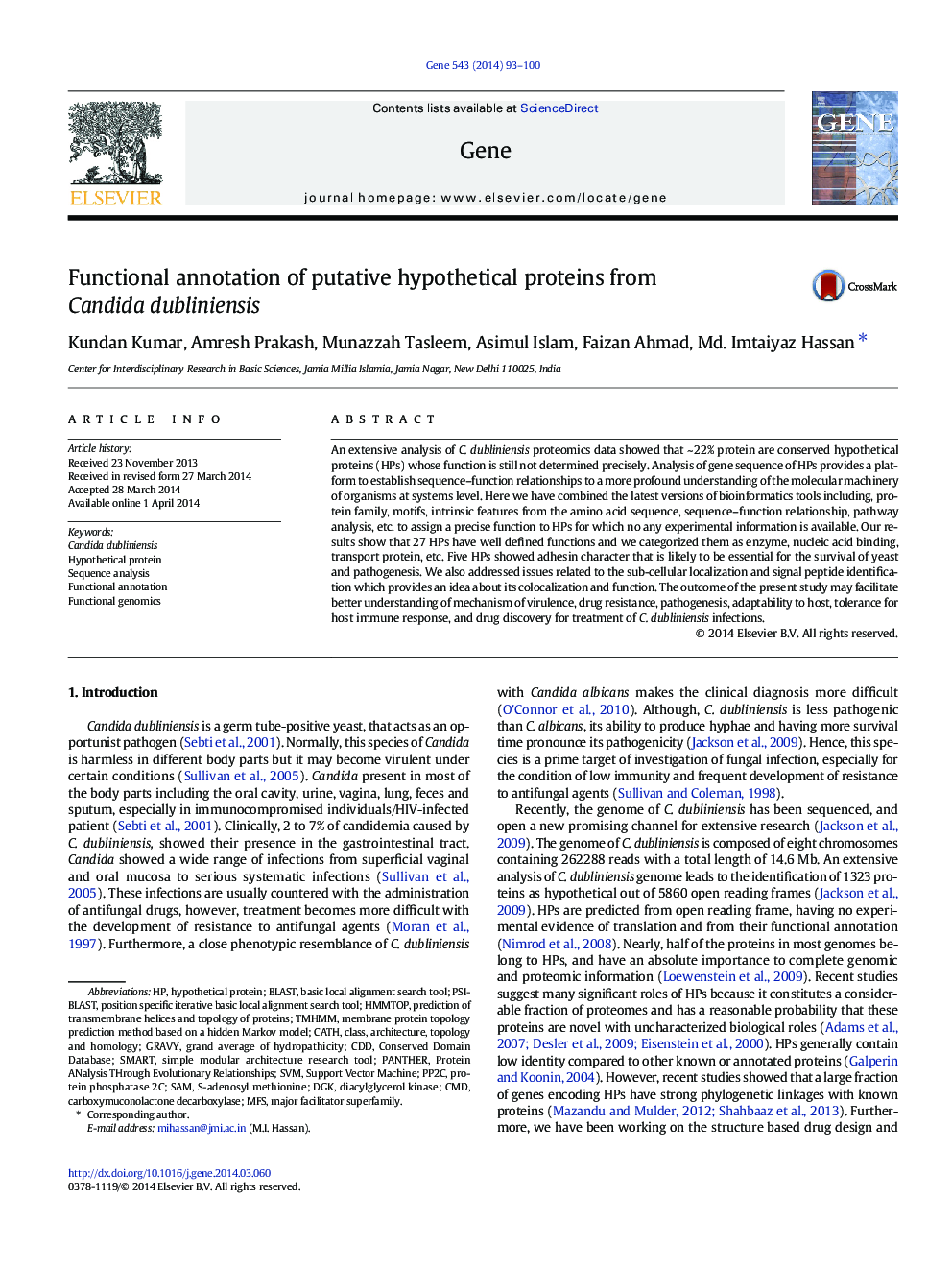| Article ID | Journal | Published Year | Pages | File Type |
|---|---|---|---|---|
| 2816354 | Gene | 2014 | 8 Pages |
•Hypothetical proteins from the C. dubliniensis genome were annotated.•Latest versions of several bioinformatics tools were used to assign the function.•Function of 27 hypothetical proteins was successfully assigned.•These findings will be helpful to understand Candidial pathogenesis precisely.
An extensive analysis of C. dubliniensis proteomics data showed that ~ 22% protein are conserved hypothetical proteins (HPs) whose function is still not determined precisely. Analysis of gene sequence of HPs provides a platform to establish sequence–function relationships to a more profound understanding of the molecular machinery of organisms at systems level. Here we have combined the latest versions of bioinformatics tools including, protein family, motifs, intrinsic features from the amino acid sequence, sequence–function relationship, pathway analysis, etc. to assign a precise function to HPs for which no any experimental information is available. Our results show that 27 HPs have well defined functions and we categorized them as enzyme, nucleic acid binding, transport protein, etc. Five HPs showed adhesin character that is likely to be essential for the survival of yeast and pathogenesis. We also addressed issues related to the sub-cellular localization and signal peptide identification which provides an idea about its colocalization and function. The outcome of the present study may facilitate better understanding of mechanism of virulence, drug resistance, pathogenesis, adaptability to host, tolerance for host immune response, and drug discovery for treatment of C. dubliniensis infections.
